NBA Finals contenders’ top weakness: Who can exploit them?
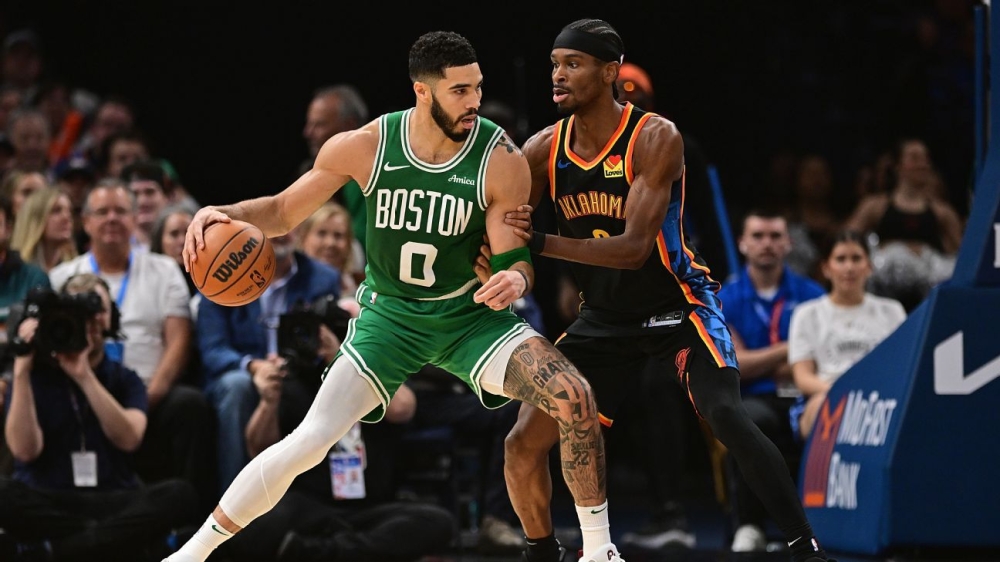
The gauntlet of the NBA playoffs, which requires the champion to win four series which could last up to seven games each, has a knack for revealing teams’ weaknesses en route to the Finals.
Every team, even the three considered the NBA’s top contenders — the No. 1 seeded Oklahoma City Thunder, the Eastern Conference-leading Cleveland Cavaliers and the defending champion Boston Celtics — has shortcomings.
For each of the contenders — the eight teams with the best odds at reaching the Finals, according to ESPN’s Basketball Power Index — we’re taking a look under the statistical microscope to identify weaknesses and which potential opponents could expose them in the postseason.
East contenders:
BOS | CLE | NYK
West contenders:
DEN | GS | HOU | LAL | OKC

EAST CONTENDERS
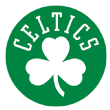
Boston Celtics
Weakness: Insufficient pace
It’s not easy to find a weakness in the Celtics, who join the Thunder with a top-five offense and defense. But one potential playoff problem for Boston is an overly methodical offense — and I don’t mean the team’s reliance on 3-pointers.
Rather, it ranks near the bottom of the league in a host of statistics related to offensive speed: 27th in pace, 30th in fast break points, 30th in transition frequency, per Cleaning the Glass; 27th in average time to shoot after a defensive rebound, per Inpredictable; and 30th in average time to shoot after a turnover.
The Celtics’ deliberate play hasn’t harmed their overall offensive efforts over the past two seasons — but for small stretches, especially when their 3s aren’t falling, Boston can get stuck in the mud. And it might not have the fast-break gear to free themselves and generate easy buckets.
Who might exploit it: Thunder, Orlando Magic, Cavaliers
The Thunder have by far the best half-court defense in the league, per Cleaning the Glass, a full four points per 100 possessions ahead of second place. The Thunder also have the second-best transition defense (behind Boston), but an overreliance on half-court plays against a set defense could doom the Celtics in a potential Finals matchup with OKC.
The Celtics lost both games against the Thunder this season — in part because of cold shooting from deep — and in the first of those contests, they produced their lowest point total (92) of the season despite a healthy lineup. Boston’s offense was more dynamic in its second meeting, but it hit a wall in the second half as the Thunder pulled away.
Meanwhile, the Magic — who could face the Celtics in the first round — and Cavaliers have the best half-court defenses in the East. Orlando, in particular, doesn’t have the offensive firepower to truly intimidate the Celtics, but its defensive personnel could create a more frustrating series than expected. — Zach Kram

Cleveland Cavaliers
Weakness: Backcourt size
The Thunder and Celtics don’t have a weak link on defense. Both teams’ starters are at least 6-foot-4, and according to estimated plus-minus, all of their rotation players rate as average or better defensively (or at least close to it since Cavs forward Aaron Wiggins is rated slightly below average), making it difficult for any opponent to know where to attack them.
But Cleveland’s playoff foes will focus attention on the undersized backcourt players, who largely depend on big men Evan Mobley and Jarrett Allen to cover for them. Every postseason, we see teams force opposing guards to switch onto apex wings, and Cleveland presents several easy targets: Donovan Mitchell (listed at 6-3), Darius Garland (6-1) and Ty Jerome (6-5), who might be the worst defender of the three. When Jerome has been the screener defender this season, opponents have scored 1.13 points per pick, per Second Spectrum, which ranks in the 94th percentile.
Who might exploit it: Thunder, Detroit Pistons
Any team with a strong set of perimeter scorers can target this weakness, but the team with the best built-in system to do so is Oklahoma City, if both No. 1 seeds reach the Finals. That’s because the Thunder love a guard-guard pick like any club — they’ve set nearly twice as many as the second-place team (LA Clippers) this season, per Second Spectrum.
Isaiah Joe, Luguentz Dort, Cason Wallace and Alex Caruso all rank among the league leaders in guard screen setters. That’s a frightening prospect for Cleveland, which would have to either surrender an open 3-pointer to a decent shooter or let Shai Gilgeous-Alexander — one of the league’s craftiest and most efficient isolation scorers — to isolate on one of the Cavs’ guards after a switch.
Detroit could also flex its muscles in a potential second-round clash with Cleveland. Malik Beasley and Tim Hardaway Jr. set frequent screens for Cade Cunningham, which could force a smaller Cleveland guard to switch onto the bigger Cunningham one-on-one. — Kram
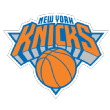
New York Knicks
Weakness: Defending stretch big men
Ironically, given that Knicks center Karl-Anthony Towns is the NBA’s best stretch big, New York struggles to corral opponents’ shooting centers on the defensive end. The Atlanta Hawks are the only team that allows more points directly off pick-and-pop plays than the Knicks, who often leave big men open beyond the arc or get forced into difficult rotations in an effort to cover the entire perimeter.
Knicks coach Tom Thibodeau rarely asks Towns to switch — he’s done so on just 2.7% of screens he’s faced this season, per Second Spectrum, which ranks in the 2nd percentile of players with at least 200 picks defended — but that means a simple pick-and-pop in a five-out offense can stress the Knicks’ defense past the breaking point.
Who might exploit it: Celtics, Milwaukee Bucks
Unfortunately for the Knicks, their potential opponents in the first and second rounds employ two of the most prolific pick-and-poppers in the league. Over the past two seasons, Brook Lopez of the Bucks and Kristaps Porzingis of the Celtics rank in the top 3 of this play per 100 possessions (Chicago’s Nikola Vucevic ranks first).
Porzingis missed two of Boston’s three wins against New York this season, but in the one game he played, he walked into a number of wide-open 3s after screens. Eventually, Towns started sticking with the Celtics’ ball handler as a teammate switched to cover Porzingis, but Boston didn’t mind that matchup. In theory, a Knicks team with wings Mikal Bridges, OG Anunoby and Josh Hart is built to defend the Celtics’ high-octane attack. However, it’s fallen flat this season because the Knicks can’t keep up with Boston’s shooters.
The Bucks, at least, might not pose as much of a threat because of a lack of dangerous perimeter players around Lopez and Giannis Antetokounmpo. Lopez is also a less dynamic scorer than Porzingis; he averaged only 6.3 points in three meetings with the Knicks this season. — Kram

WEST CONTENDERS
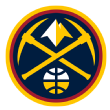
Denver Nuggets
Weakness: Transition defense
The Nuggets’ weakness could simply be overall defense. Denver’s 20th-ranked defensive rating is by far the worst for any team with a winning record. But more specifically, Denver struggles to prevent opponents from racking up easy buckets in transition: The Nuggets rank 28th in opponent transition points added per 100 possessions, according to Cleaning the Glass, and 24th in opponent fast-break points.
Denver leads the league in fast-break points, thanks in part to Nikola Jokic’s passes — but allows plenty of points on defense. The Nuggets don’t allow that many transition opportunities, but they can’t stop any of them when they do: Their opponents score 131 points per 100 transition plays, per Cleaning the Glass, versus the league average of 125.
Who might exploit it: Thunder, Memphis Grizzlies
The three best transition offenses in the NBA belong to the Thunder, Grizzlies and Nuggets. It’s no surprise Oklahoma City ranks this high, as the Thunder average the most steals (10.4) of any team in the 21st century, giving them plenty of runout opportunities. And the Grizzlies have boasted a top-three transition attack in four of the past five seasons, per Cleaning the Glass, with the only exception coming last year, when Ja Morant appeared in only nine games.
To return to the Finals, Denver might have to tamp down this weakness, depending on how the playoff bracket takes shape. To their credit, Jokic does have an uncanny ability to disrupt an opponent’s offensive rhythm and the Nuggets were somewhat successful in their regular-season matchups against Oklahoma City and Memphis this season: Across six meetings (four against the Thunder, two against the Grizzlies, which produced a 3-3 record), Denver averaged a 43rd percentile defensive effort in transition, which is closer to average than terrible. — Kram

Houston Rockets
Weakness: Half-court offense
Back at full strength, Houston has improved in half-court execution since last month, when I noted it was 26th in points per play on its first attempt to score outside of transition, according to Cleaning the Glass. The Rockets are up to 22nd, still the worst among above-.500 teams but no longer such a historic outlier for a contending team.
Overall, Houston’s offense ranks 11th in per possession scoring because the Rockets compensate by aggressively crashing the offensive glass (they’re No. 1 in the league by a wide margin in points per missed shot, according to Cleaning the Glass) and getting out in transition. Houston’s rate of half-court plays is seventh lowest.
Still, those easy points tend to dry up in the playoffs. The 2022-23 Knicks, another team that relied heavily on second chances, crashed from fourth in offensive rating during the regular season to 13th in the playoffs, winning a rock fight with Cleveland in the first round before being knocked off by the Miami Heat.
Who might exploit it: Clippers, Thunder
The Rockets are second in half-court defense, per Cleaning the Glass, but they could face the Clippers or the Thunder. The Clippers would be a dangerous first-round opponent based on their stout defense, league-leading defensive rebound rate and advantage over Houston in playoff experience.
Although the Rockets have won three regular-season meetings (the teams play Wednesday in L.A.), Kawhi Leonard hasn’t played against Houston this season, and James Harden missed the most recent matchup.
If the Rockets can get to the conference finals as the No. 2 seed, it’s all gravy but they’ve also managed to hand the Thunder two of their 13 losses during a five-game season series. On Friday, Houston shot an effective 56% from the field (counting 3s as 1.5 field goals) in a 125-111 win. — Pelton

Golden State Warriors
Weakness: Midrange shooting
Despite having two of the greatest 3-point shooters in NBA history between Stephen Curry and Buddy Hield, Golden State isn’t nearly as comfortable a step inside the arc. Since Curry in the large part has migrated out of the midrange (he’s attempting 11% of shots between the paint and the 3-point line, a career low), the Warriors shoot just 37% on non-paint 2s, the league’s fourth-lowest mark.
Although Jimmy Butler III has been a midrange marksman at times, that hasn’t been the case this season. Butler is also shooting 37% on non-paint 2s and Golden State has actually been worse from the midrange since trading Dennis Schroder in December.
Naturally, the Warriors compensate by limiting their midrange shots to a bottom-10 rate. But that may increase by necessity in the postseason: Over the past four years, playoff teams have attempted 14% of their shots as 2s outside the paint, up from 13% for those same teams in the regular season.
Who might exploit it: Nuggets
Intriguingly, none of the four teams forcing at least 10 non-paint 2s per game are potential West playoff opponents for Golden State. The top three (Boston, Cleveland and Milwaukee) play in the East, while the fourth team (Portland Trail Blazers) is unlikely to reach the play-in tournament.
The Nuggets, who force opponents to take 9.5 shots per game from midrange, are tops among teams the Warriors could face. Golden State took just six non-paint 2s against Denver on March 17, but went 1-for-6 in a rare loss since adding Butler. The Warriors fared better on greater volume Friday, going 7-of-14 from midrange in a 118-104 win. — Pelton

Los Angeles Lakers
Weakness: Turnover differential
Integrating Luka Doncic on the fly since his February arrival has predictably caused turnover issues for the Lakers. The Lakers are 13th overall in avoiding turnovers but looking at the season’s numbers are misleading given how different their roster looks compared to the start of the season.
Since the All-Star break, the Lakers have the NBA’s 10th-highest turnover rate on a per possession basis, according to NBA Advanced Stats, and the Nuggets are the only above-.500 team coughing it up more in that span.
The issue is exacerbated since the Lakers never forced many turnovers in the first place. (Their opponent turnover rate is largely unchanged since the break.) As a result, the Lakers have gone from essentially even in turnovers before Doncic’s debut to committing 0.8 more per game since the break, eighth worst.
Who might exploit it: Warriors, Thunder
Not only does Oklahoma City force the most turnovers in the NBA, its differential (minus-5.2 per game) is on pace to be the largest in league history. The Thunder forced 17 turnovers in their November win over the Lakers.
Like the Lakers, the Warriors changed their strengths and weaknesses by trading for a superstar before the deadline. Adding Butler has helped Golden State force more turnovers on a per possession basis than any team since the All-Star break.
In their first meeting since the trades — neither Butler nor Doncic was active for the Lakers’ Feb. 6 win — the Warriors won 123-116 in L.A. on Thursday, though turnovers had little to do with it. The Lakers committed 10, three below their season average. — Pelton
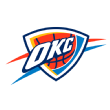
Oklahoma City Thunder
Weakness: Free throw differential
It’s hard to find much Oklahoma City doesn’t do well, but the Thunder rank 27th in free throw rate and allow the fifth most per shot attempt on defense. The net result of that is their opponents take 3.2 more foul shots per game, ahead of only the lowly Toronto Raptors.
Oklahoma City coach Mark Daigneault even cited that differential when his team had two players ejected following a scuffle in a March 2 win over the San Antonio Spurs.
“We have the worst free throw differential in the NBA,” Daigneault said. “So, more fouls are being called on us than are being called on our opponents. I think there’s a cumulative frustration, and I think our guys finally got to a point where they had had enough.”
The Spurs have the NBA’s best free throw differential this season, but the Thunder won’t have to worry about facing them in the playoffs.
Who might exploit it: Nuggets, Lakers
The Lakers and Nuggets, both in the West’s top four, are realistic potential opponents in the conference semifinals or finals.
Denver and Oklahoma City split the season series, although free throws were only a key factor in one of the Nuggets’ two wins. On Nov. 6, Denver took 33 foul shots and had a six-point edge at the line as the Thunder suffered their first loss of the season.
The Thunder and Lakers are to some degree funhouse mirrors of each other. Sunday will be just their second meeting all season, and the other came in November long before the trade for Doncic transformed L.A.’s roster. The Lakers are still equally good at getting to the foul line with Doncic, but no longer as effective at avoiding fouling as they were with Anthony Davis as a defensive anchor. — Pelton
Source: espn.com
